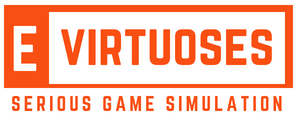When considering a vehicle wrap for advertising or personalization, one of the main decisions is whether to go with a partial or full vehicle wrap. Both options offer significant benefits, but they differ in cost, coverage, and impact. Understanding these differences can help you choose the best option for your needs.
Partial Vehicle Wraps: Focused Design and Lower Cost
A partial vehicle wrap covers only specific areas of the vehicle, often including the sides, rear, or hood. This option is ideal for businesses that want to highlight their brand without covering the entire vehicle. For example, a partial vehicle wrap might feature the company logo and contact information on the sides or back of the vehicle, allowing you to maintain a more minimalistic look while still making an impact.
One of the key advantages of a partial vehicle wrap is cost. Since only a portion of the vehicle is covered, the materials and labor involved are less extensive, making partial wraps more affordable compared to full wraps. This makes them a great option for businesses with a tighter budget or for those who are just starting to explore vehicle advertising.
Another advantage of partial vehicle wraps is flexibility. If you want to update your design or change your branding in the future, it’s easier to modify a partial wrap than to rewrap an entire vehicle. Plus, the lower coverage means less maintenance, which can save on upkeep costs over time. A vehicle wrap Arlington Heights can provide a cost-effective way to advertise while still reaching your target audience effectively.
Full Vehicle Wraps: Maximum Impact and Brand Visibility
In contrast, a full vehicle wrap covers the entire surface of the vehicle, from bumper to bumper. This option is perfect for businesses that want maximum exposure and visibility. A full wrap transforms the entire vehicle into a mobile billboard, ensuring that your brand is seen from every angle. This is especially beneficial if your vehicle is frequently in high-traffic areas, as it maximizes the chances of attracting attention.
Full vehicle wraps are often more detailed and allow for a more dynamic design. The entire canvas of the vehicle is available for branding, offering endless possibilities for creativity. Whether you want a vibrant, eye-catching design or a sleek, professional look, a full wrap can accommodate your vision.
However, full vehicle wraps are more expensive than partial wraps. The materials required to cover the entire vehicle are more costly, and the installation process is more time-consuming. For businesses that have a larger advertising budget or those who want to make a bold statement, a full vehicle wrap is an investment that provides long-term brand recognition.
Considerations for Choosing the Right Wrap
When deciding between a partial and full vehicle wrap, consider your business goals, budget, and the visual impact you want to achieve. If you are just getting started with vehicle advertising, a partial wrap is a great entry point. It allows you to test the effectiveness of mobile advertising without committing to the higher costs of a full wrap.
On the other hand, if brand visibility and maximum exposure are your top priorities, a full wrap may be the better choice. Whether you’re looking for a car wrapping service for a single vehicle or an entire fleet, full vehicle wraps can help your business stand out on the road.
Ultimately, the decision between partial and full wraps depends on how much coverage you need and your desired budget. Both options are effective for promoting your business, but understanding the differences can ensure you make the best choice for your needs.
